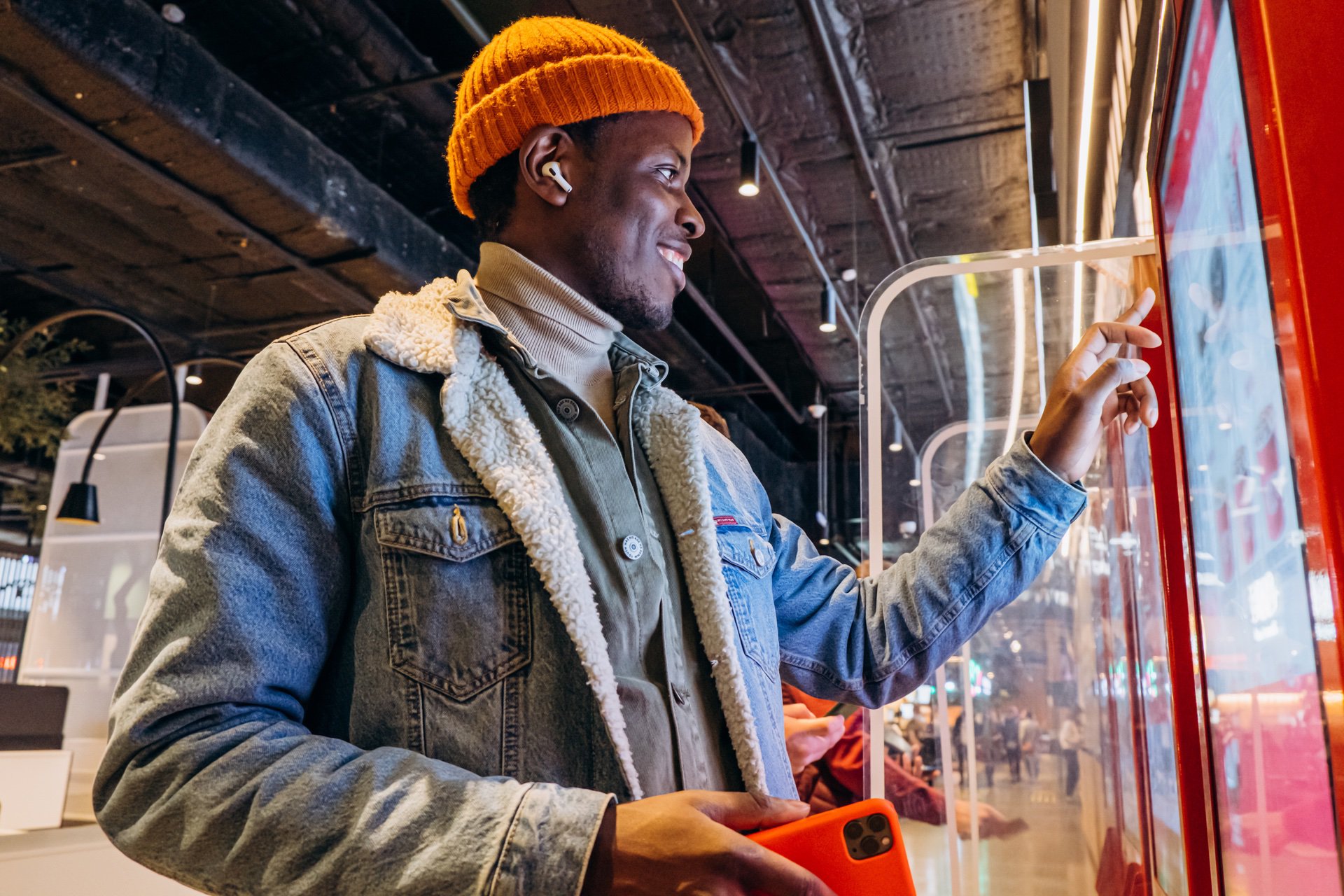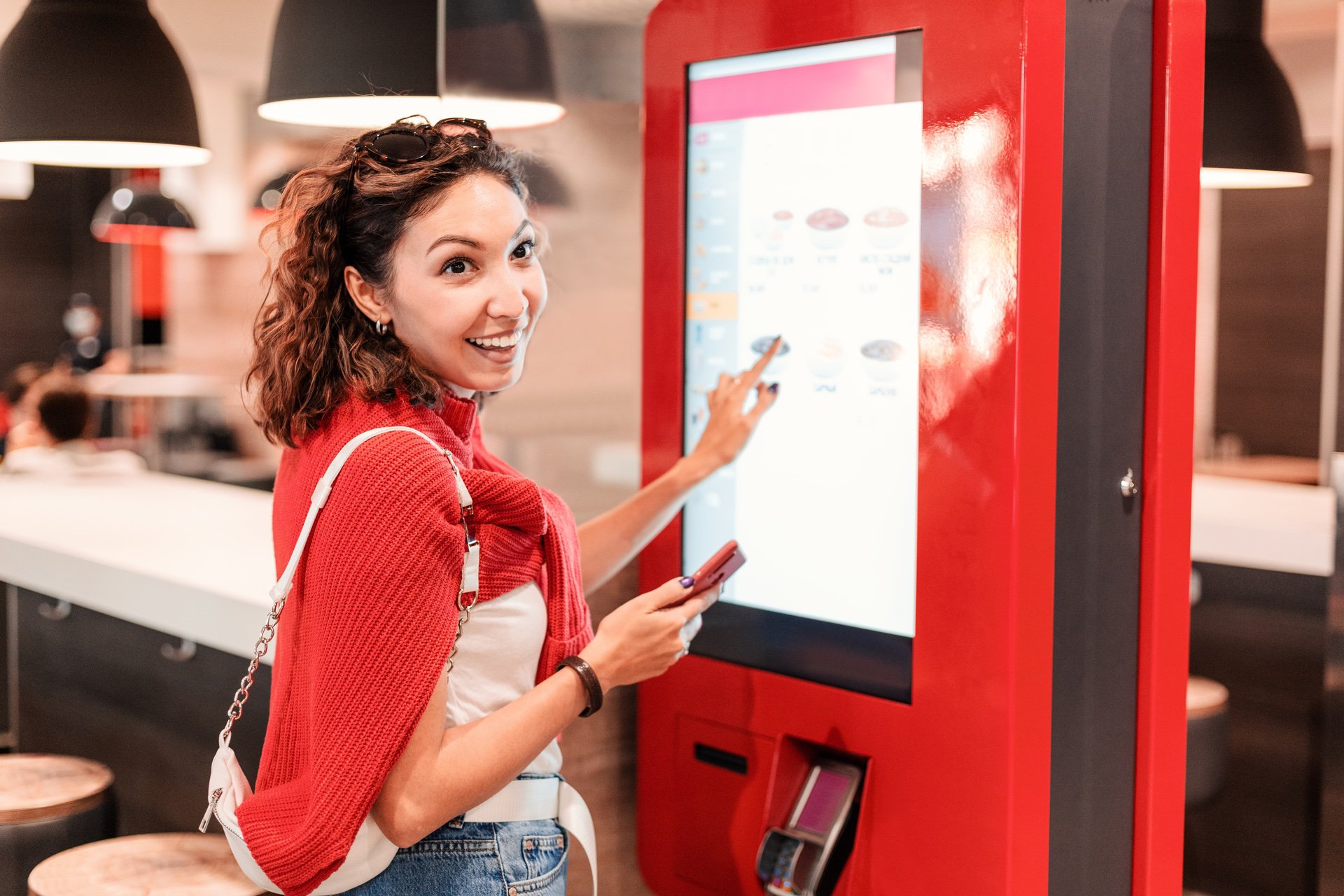You enter a bustling fast-casual restaurant and approach a sleek, self-service kiosk to browse the menu. The pressure is palpable, not just from the food choices on screen, but the line forming behind you.
Many restaurants have implemented self-service technology (SST) to streamline menu ordering processes, manage staffing shortages and enhance customer experience. This influx of SST in restaurants has increased the prevalence of customers waiting in lines while placing orders—and calling attention to how social factors can influence the customer ordering experience.
In their new paper, “Lined Up? Examining a ‘Waiting Line’ Effect in Technology-Enabled Restaurant Menu Ordering,” School of Sport, Tourism and Hospitality Management associate professor Lu Lu and Fox School of Business PhD candidate Wangoo Lee examine the impact of waiting lines on menu ordering behavior when using SST.
Their research, comprised of three experimental studies, provides valuable insights into the unintended consequences of waiting lines and offers managerial strategies for minimizing negative outcomes.
In their first scenario-based experiment, Lee and Lu wanted to assess how and if customers felt time pressure while ordering food.
“We asked our research participants to imagine they are visiting a fast-casual restaurant, where they either approach a self-service kiosk or human staff,” Lee says. “Then, they imagine that as they are ordering menu items, people line up behind them.”
Participants then completed a survey to report their feelings of time pressure and menu ordering behavior.
According to Lee, participants who utilized the self-service kiosks while a line formed behind them reported feeling greater time pressure than those who interacted with the human staff, despite experiencing the same line formation.
The survey results also suggest customers queuing up in lines may reduce menu ordering time and total purchase amount, as well as increase familiar menu purchases.
“This finding holds significant implications for the restaurant industry, particularly regarding the importance of new product development as a key marketing strategy to maintain consumer engagement,” Lu explains. “If customers often opt for familiar choices, restaurants can encounter challenges in sustaining customer interest over time.”

For the second study, the researchers created a webpage that mimics a self-service, menu-ordering scenario where participants could click and browse menu items.
“The treatment group was exposed to a pop-up message before beginning the simulation that said the business takes full responsibility for any service delays and customer experiences during menu orders,” says Lee.
Compared to the control group who did not receive a pop-up message, the treatment group reported lessened feelings of time pressure.
Lastly, Lu and Lee compared line design strategies to gain practical insights.
According to Lee, “If people are lining up in one line that can be distributed to three other queues, unlike each kiosk having its own line, they will feel less responsibility for the people lining up behind them, because they are now sharing responsibility with two others.”
Moving forward, Lu and Lee believe their research will pose managerial decisions for those in the hospitality business.
What does the future look like for customers in a fast-casual restaurant?
Lee believes customers will be best served by making line design adjustments, implementing pop-up messages and switching to virtual queues rather than physical lines. This, he believes, will alleviate pressure and enhance customer ordering experience.
“Any methods that can ease the responsibility that customers might feel during their self-service ordering experiences will be helpful,” Lee says.
